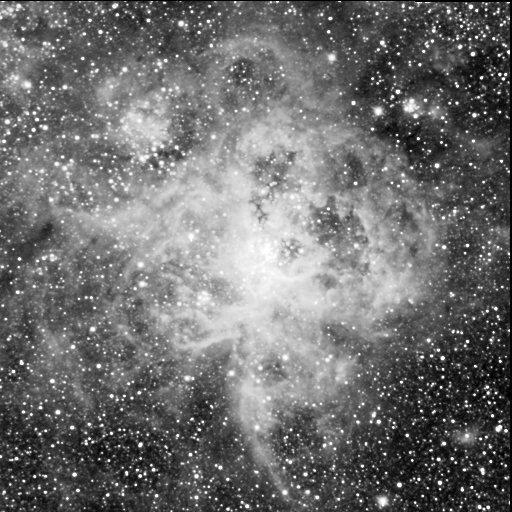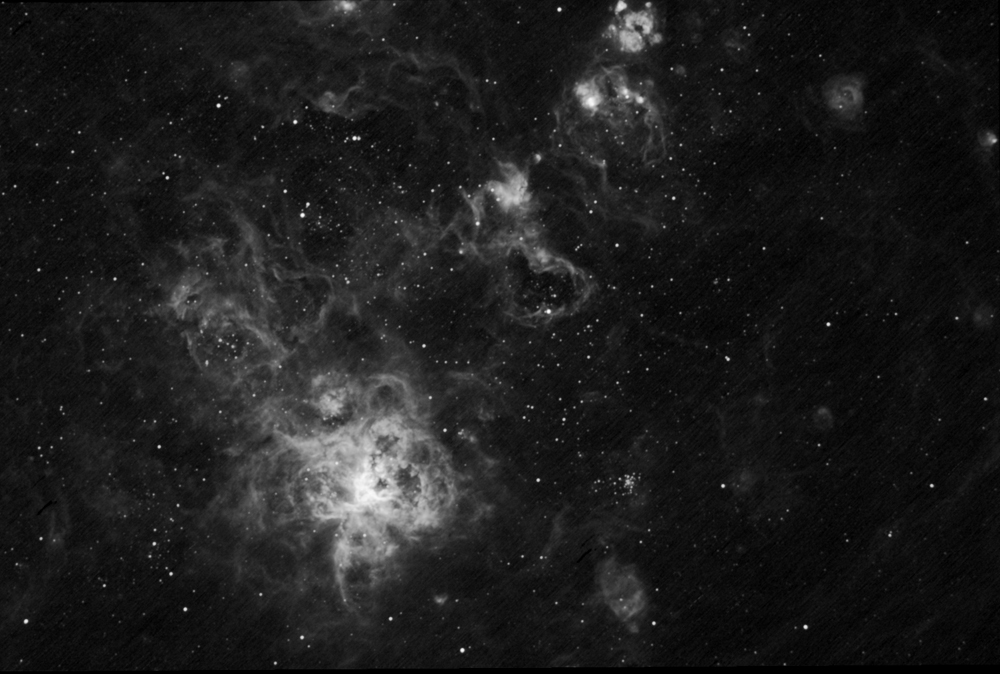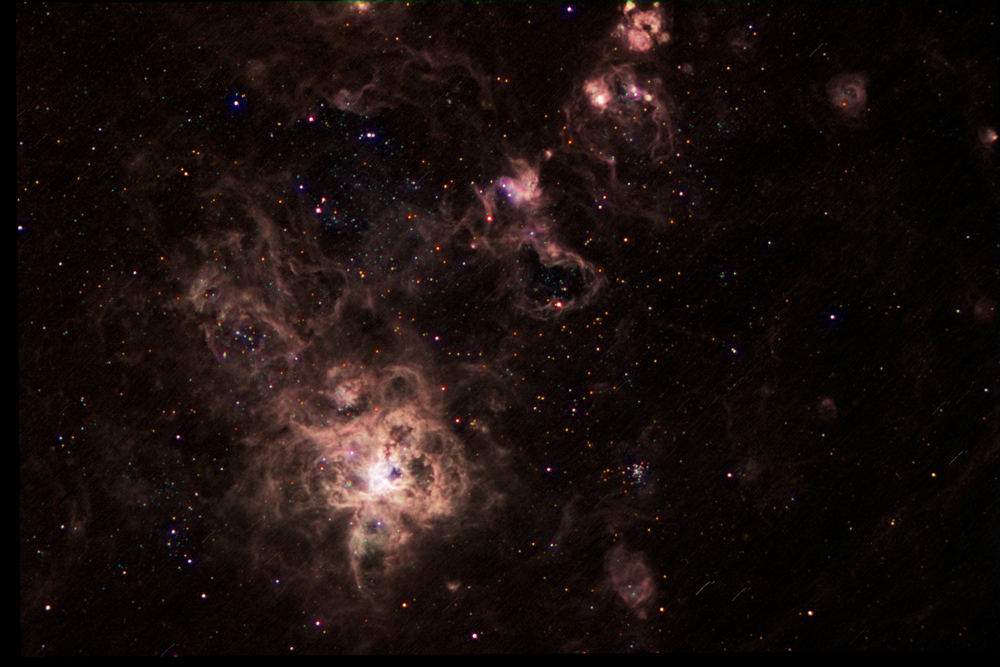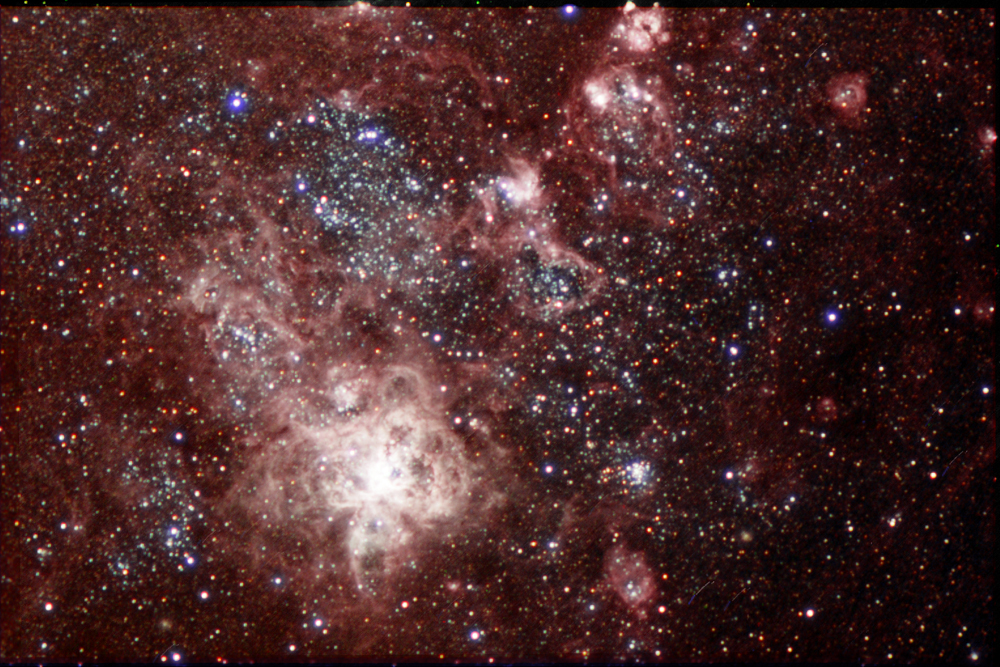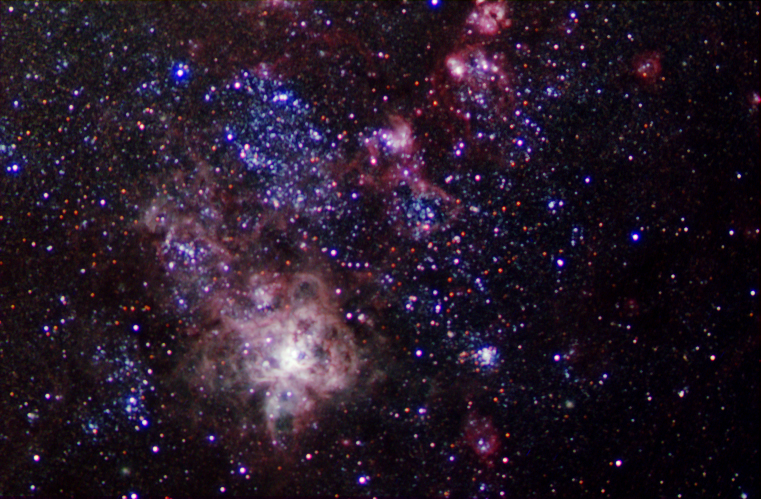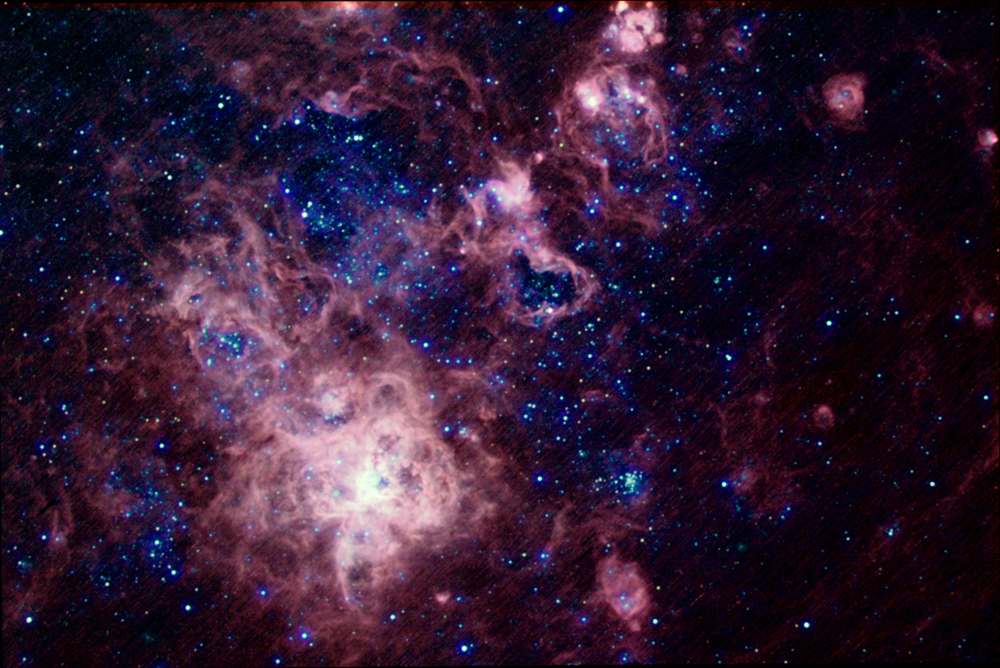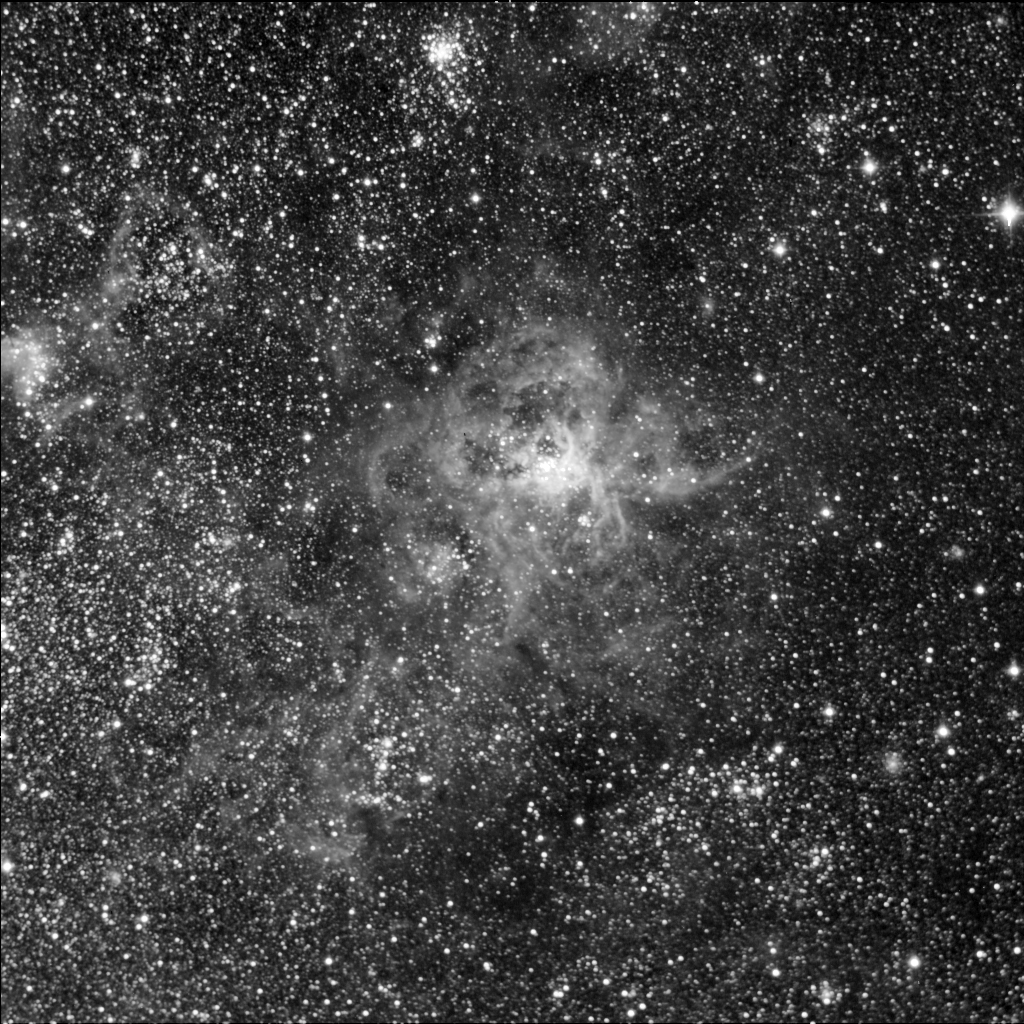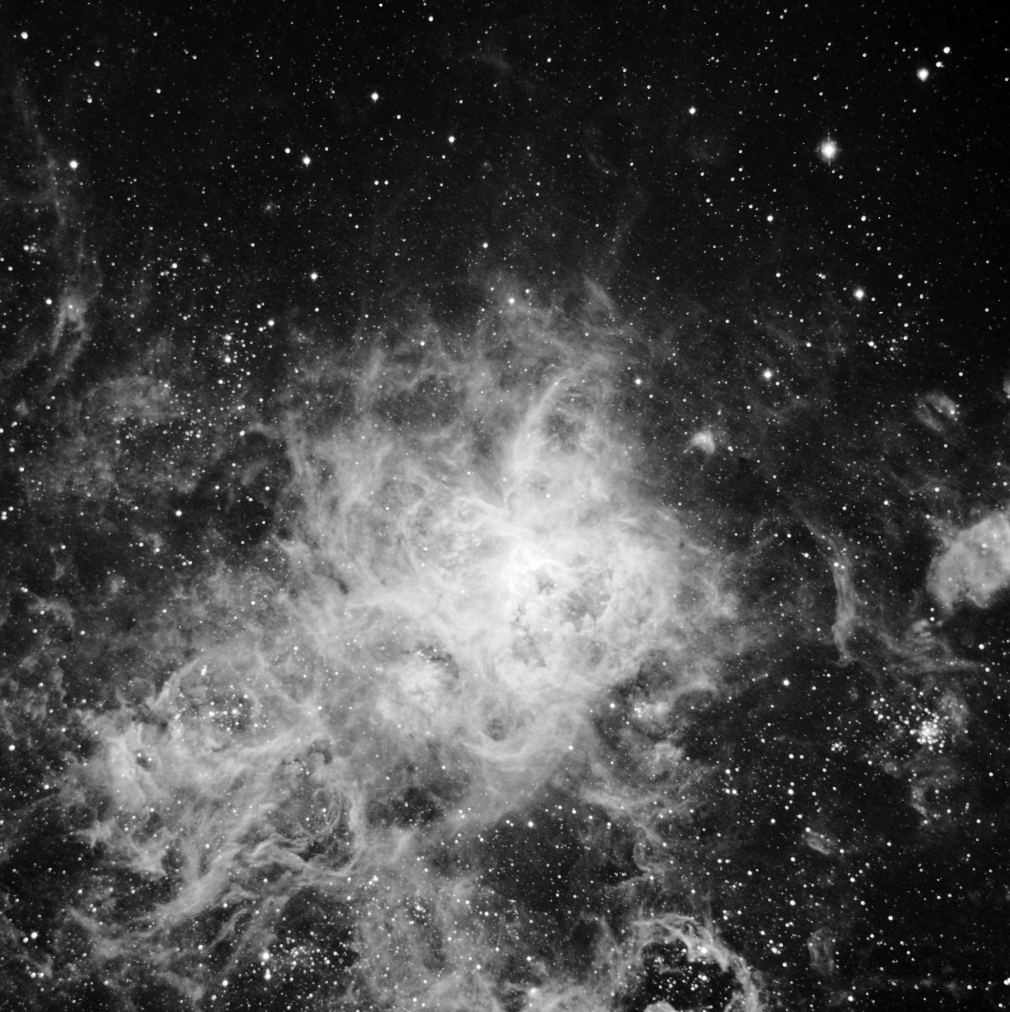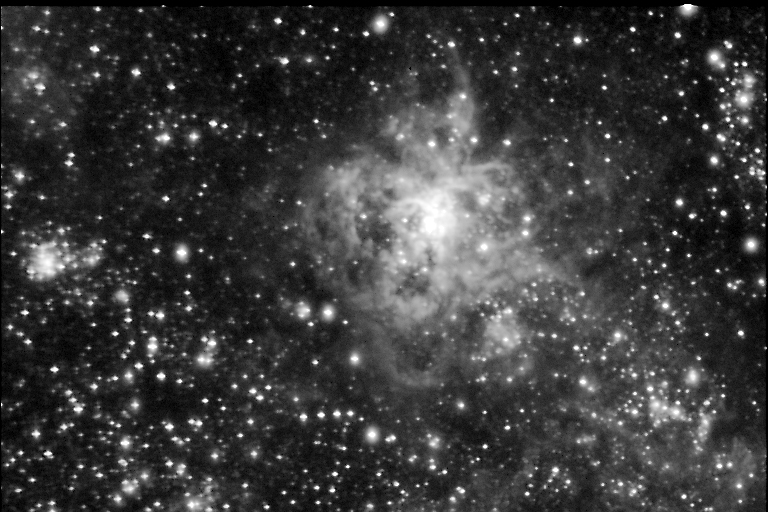
Combination of 2, 5 minute exposures, Meade 416xt CCD.
5" f/5 refractor at prime focus.

Visible to the naked eye as a faint "star" near the eastern end of the bar of the Large Cloud of Magellan, the Tarantula nebula is one of the "must see" objects of the southern skies. In an 8" telescope the trailing whisps of nebulosity that give the nebula its name are easily visible. As is a small cluster of stars near the centre that look like the eyes of the spider. In a larger telescope, the nebula really does look like a giant arachnid lurking in the sky.
Using such a short focus refractor with a CCD is excelent for obtaining a wide field of view, however notice how many stars, especially the bright ones are surrounded by a glow. This is out of focus light due to the refractor not bringing both visual and infra-red light into a common focus. A twist on the common problem of chromatic aberation. The refractor is an achromat that performs very well for visual and photographic use. however when it was manufactured nearly 50 years ago, CCD's did not exist and so infra-red correction was not a problem. Images made with reflecting telescopes do not suffer from this problem, as can be seen below.
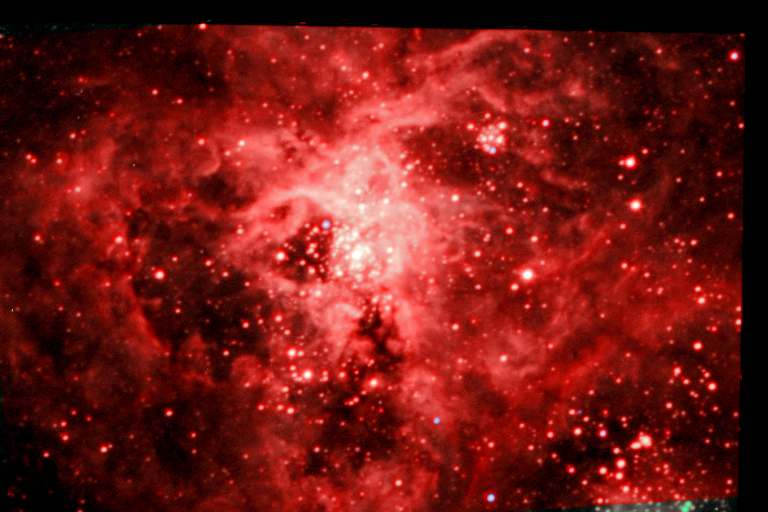
Colour combination made using 5, 5 minute clear filter images, 1, 5 minute red filter image
2, 5 minute visual filter images and 2, 6 minute H-beta filter images
Meade 416XT CCD. 300mm F/6 newtonian telescope at prime focus.
In making the above image, I did not have any normal colour filters so I used Johnson-Cousins R & V filters for the red and green layers, and an H-beta for the blue layer. Some difficulty was experienced as the H-beta filter had a considerable red leak. In the original combination, there were a number of lavender coloured stars!!! Considerable work was required in Photoshop to rectify this, with the result that the nebula came out a little too red. I am looking forward to the opportunity to retake this object with normal colour filters on my next trip back home.
